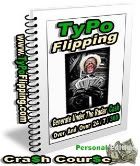Before you start with your search engine optimization efforts, you must make sure that your web pages are spam free. This is very important.
If you use a spam technique on your website, all other search engine optimization efforts are pointless.
If a search engine has tagged your website as a spam source then you have to remove the spam elements from your web pages before the search engine will take another look at other elements of your site.
1. Many website elements can cause problems
Most search engines consider the following spam:
•cloaking (the web server returns different pages for search engine spiders and human web surfers)
•doorway pages
•misleading redirections
•hidden text (text has a color that is very similar to the background color, text in very small font sizes, text that has been hidden with CSS tags etc.)
If you use one of these techniques on your web pages, remove them now. You might get short term results with them but it is extremely likely that search engines will ban your site if you continue to use them.
2. You might have spam elements on your website without knowing it
Depending on how you create your web pages, your website might unintentionally contain spam elements. For example, some content management systems (CMS) create hidden text sections.
Many content management systems (CMS) use the CSS display:none technique to create drop-down menus or other expandable web page elements. Although these elements are not designed to mislead web surfers, search engines might interpret the hidden texts as a spamming attempt.
Other content management systems use spider blocking software that might be misinterpreted as cloaking. If you're not sure, check your server and your web pages. It is very important that your web pages don't contain spam elements.









No comments:
Post a Comment